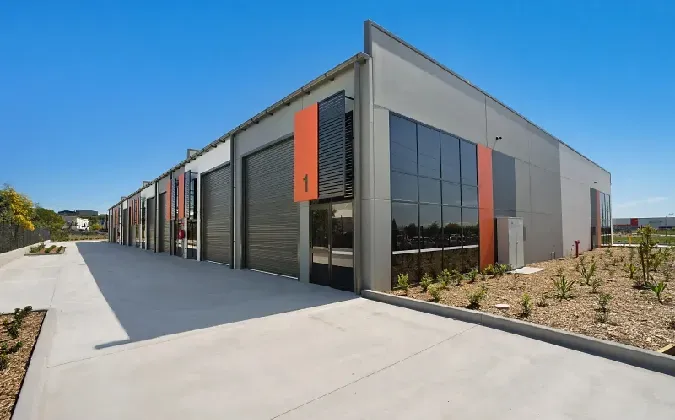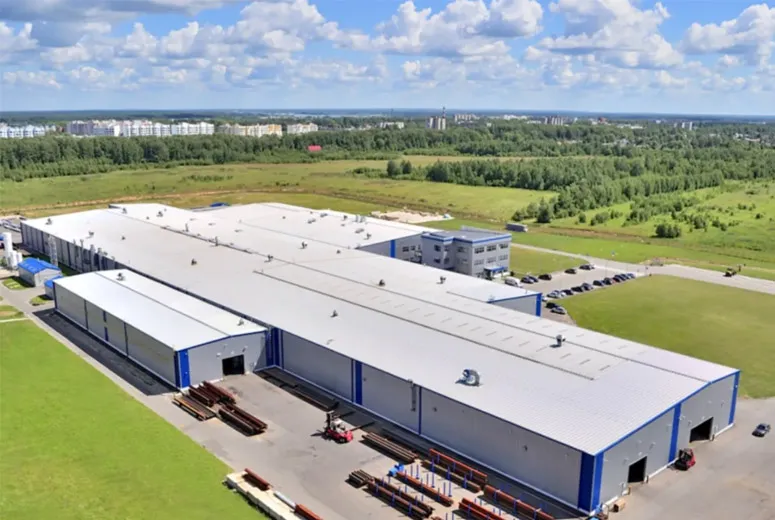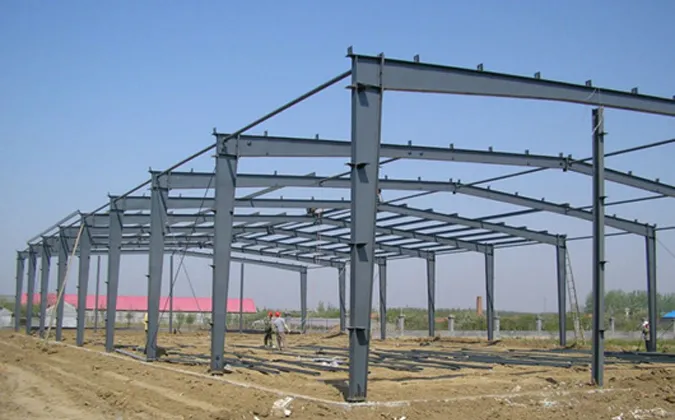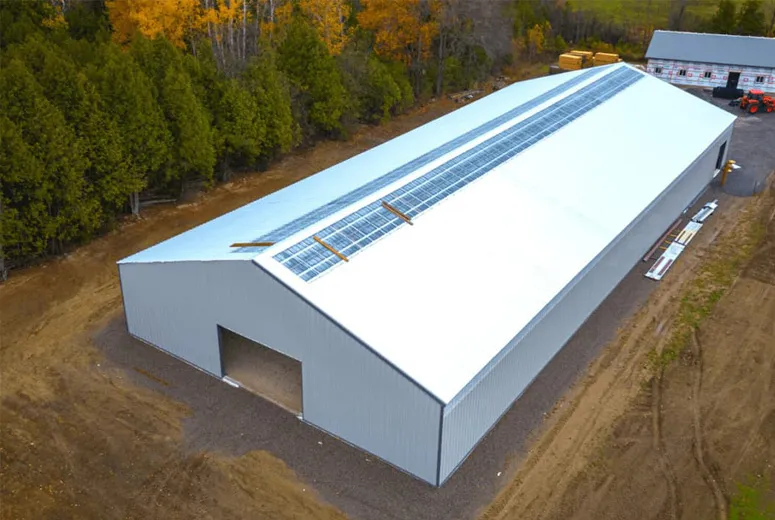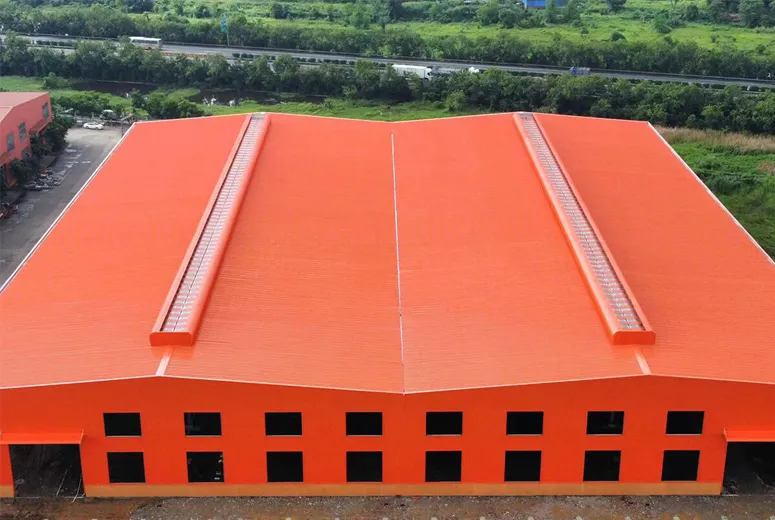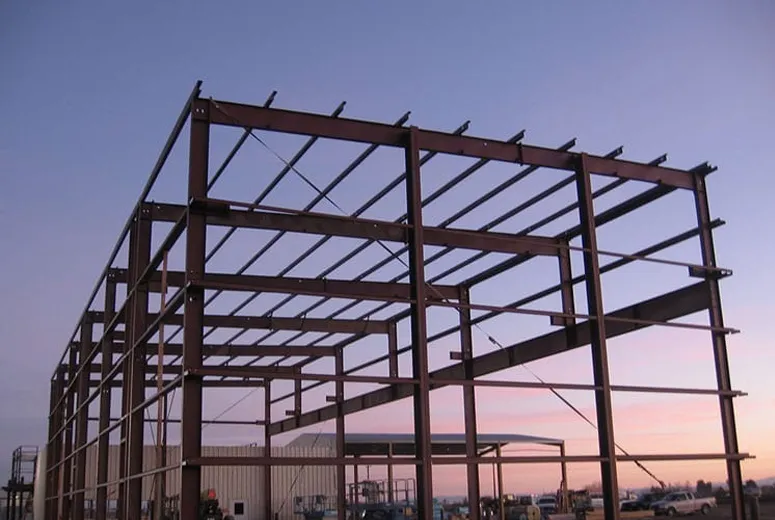Warehouse buildings are essential for efficient storage and distribution operations across industries. These warehouse steel buildings are specifically designed to provide secure, spacious, and functional environments that meet various storage needs, especially for companies looking for steel warehouses for sale.
1. Spacious Design
Warehouse buildings feature large open floor plans with high ceilings, allowing for optimal use of vertical space. This design accommodates racks, shelving, and heavy equipment like forklifts, ensuring efficient organization and easy access to goods. Many businesses favor metal warehouse buildings for their layout flexibility.
2. Structural Durability
Built with materials such as steel or reinforced concrete, warehouse buildings offer exceptional durability and resistance to environmental factors like wind, snow, and earthquakes. This ensures long-term protection of inventory and reduced maintenance costs.
3. Customization and Flexibility
Modern warehouse buildings are highly customizable. They can include features like loading docks, mezzanines, partitioned storage areas, and temperature-controlled zones for specific products. The flexibility of these buildings allows businesses to adapt to evolving storage requirements.
4. Quick Construction
Prefabricated components are often used in constructing warehouse buildings, significantly reducing construction time. This is especially advantageous for businesses needing to expand storage capacity quickly.
5. Energy Efficiency
Warehouse buildings are increasingly incorporating energy-efficient features such as insulated panels, skylights, and advanced HVAC systems. These enhancements lower operational costs and create a sustainable storage environment, making steel warehouse cost a long-term value rather than an expense.
In conclusion, warehouse buildings for sale today are designed to be durable, adaptable, and efficient. From warehouse building suppliers to end-users, these structures remain a critical asset for industries that rely on streamlined logistics and secure inventory management. Their customizable and robust features ensure they meet the diverse needs of modern businesses.
What is a Warehouse Building?
A warehouse building is a large, spacious structure specifically designed for the storage, handling, and distribution of goods and materials. These warehouse steel buildings play a crucial role in supply chains, serving as a storage hub for products before they are shipped to retailers, wholesalers, or customers. Metal warehouse buildings are used across various industries, including manufacturing, e-commerce, logistics, and distribution.
The defining characteristic of a warehouse building is its open floor plan, which allows for maximum storage space and easy movement of goods. Warehouses typically have high ceilings to accommodate vertical storage systems like shelving or racking, making efficient use of available space. The layout is designed to streamline processes such as receiving, storing, and dispatching products.
Warehouse buildings are built using strong, durable materials such as steel, concrete, or metal, ensuring the structure can handle large quantities of goods and withstand the demands of constant operation. Loading docks are commonly featured in warehouse buildings, providing easy access for trucks to deliver and pick up shipments.
Steel warehouses are built using strong, durable materials such as steel, concrete, or metal, ensuring the structure can handle large quantities of goods and withstand the demands of constant operation. Loading docks are commonly featured in metal warehouses, providing easy access for trucks to deliver and pick up shipments.
In addition to basic storage functions, many modern warehouses are equipped with advanced technologies like inventory management systems, climate control for sensitive products, and security systems to protect inventory. These modular warehouse buildings are often designed to be flexible, allowing businesses to modify the space as storage needs evolve.
In conclusion, a warehouse building is a specialized structure in industrial buildings(https://www.hongjishunda.com/products/steel-industrial-building) that plays a vital role in logistics and inventory management. It provides the necessary space and infrastructure to store goods efficiently, ensuring smooth operations within supply chains and supporting business growth.
What are the steps to build a warehouse?
Building a warehouse building involves several critical steps, from planning and design to construction and finishing. Each stage is essential to ensure the metal warehouse building meets the operational needs of the business and complies with industry standards. Below are the key steps involved in constructing a warehouse steel building.
1. Planning and Design
The first step is to assess the specific needs of the business, including storage requirements, the size of the warehouse, and any specialized features like loading docks or temperature-controlled spaces. During this phase, a professional architect or engineer designs the warehouse layout, ensuring it accommodates equipment, inventory storage, and workflow efficiency. Permits and zoning approvals are also obtained during this stage.
2. Site Preparation
Once the design is finalized, the site must be prepared for construction. This involves clearing the land, leveling the ground, and preparing the foundation. Excavation work may also be required if the site is uneven or has specific soil conditions that need addressing.
3. Foundation Construction
The foundation is the base of the warehouse and must be strong enough to support the building. Concrete foundations are commonly used for warehouse construction, and workers pour the concrete slab, ensuring it is level and durable.
4. Structural Framework
After the foundation is set, the steel or concrete framework is erected. This includes the installation of support beams, columns, and trusses that form the skeleton of the warehouse. The structure is designed to support the building's roof, walls, and any internal systems.
5. Roofing and Walls
Once the framework is complete, the roof and walls are installed. Roofing materials such as metal panels or steel are commonly used for their durability and cost-effectiveness. The walls may include insulation for energy efficiency.
6. Interior Finishing
The final step includes adding internal features such as shelving, storage racks, lighting, and heating or cooling systems if required. Loading docks and security systems are also set up. Once everything is in place, the warehouse is inspected to ensure it meets safety and operational standards.
In conclusion, building a warehouse requires careful planning, strong foundation work, and structural construction. Each step is essential for creating a functional, durable, and efficient storage facility.
What Makes Warehouse Building Material Matter?
When planning a durable and efficient warehouse building, choosing the right warehouse building material is one of the most critical steps to ensure long-term structural performance. At Hebei HongJi Shunda Steel Structure Engineering Co., Ltd., we’ve been dedicated to steel structure building solutions since 2000. Our facilities span 52,000 square meters, and we take pride in offering materials that balance durability, affordability, and sustainability.
Steel is at the heart of our construction solutions, and for good reason. Among all building materials, steel offers the highest strength-to-weight ratio, exceptional fire resistance, and remarkable longevity. These characteristics make it an ideal choice for modern metal warehouse buildings that must endure heavy use, harsh environments, and evolving storage needs. Whether clients are seeking steel warehouses for sale for cold-chain storage or high-density racking systems, our steel framing options provide unmatched resilience and flexibility.
Another material advantage lies in customization. We use different grades and coatings of steel to meet specific project needs, including galvanized steel warehouse configurations that resist rust and corrosion in humid or coastal areas. Our team also ensures precise structural calculations to determine wall thickness, roof slope, and beam load capacity, optimizing the building’s integrity while controlling material costs.
Sustainability is equally essential in our approach. Steel is 100% recyclable, and we actively incorporate environmentally responsible sourcing through streamlined inventory and procurement strategies. As one of the trusted warehouse building suppliers in China, we ensure that all materials meet both national and international standards, minimizing your environmental footprint and maximizing long-term value.
Our material planning extends beyond steel frames. We also provide high-efficiency insulation systems, fireproof wall panels, anti-condensation roofing, and skylight components that improve energy performance and comfort within the warehouse. This holistic attention to material details allows us to construct structures that not only withstand time but also contribute to lower operational costs.
At Hebei HongJi Shunda, we understand that every warehouse has a different purpose—and that purpose should drive the choice of material. From lightweight metal shed warehouse options for small-scale storage to heavy-load, multi-functional steel complexes, we deliver solutions that are built to last. When you invest in a warehouse building for sale from our company, you’re investing in quality from the ground up.
Smart Strategies in Warehouse Building Design
A well-planned warehouse building design goes far beyond visual appeal—it determines how efficiently a business operates within the space, how much it can grow, and how much energy and labor it consumes. At Hebei HongJi Shunda Steel Structure Engineering Co., Ltd., we take a client-first approach to warehouse design, merging technical precision with practical business logic.
Every project begins with a deep dive into the client’s operations. Are they storing heavy machinery? Are they running temperature-sensitive logistics? Or are they handling e-commerce fulfillment that demands rapid inbound and outbound flow? We’ve worked on a wide range of layouts—from modular warehouse building units for startups to expansive warehouse steel building facilities equipped for automated racking, cranes, and mezzanines.
Our design team uses industry-leading software to simulate space usage, loading flow, and lighting conditions. This ensures that our proposed designs are not only structurally sound but operationally optimal. For example, one recent client required a structural steel warehouse with 18-meter ceilings and 8 dock-level doors. Our design minimized internal supports to enhance space efficiency while integrating a ventilation system that cut cooling costs by 25%.
Additionally, modern warehouse users demand more than just space—they want functionality. That’s why we integrate smart zoning into the layout, separating areas for goods receiving, inspection, storage, sorting, and dispatch. We often incorporate natural lighting features like polycarbonate roof panels and energy-saving wall insulation to meet green building standards, aligning with our company’s commitment to sustainable development.
Steel allows remarkable design flexibility. Whether it's a large metal warehouse with wide-open interiors or a complex featuring office zones, loading bays, and elevated platforms, our steel-based designs ensure scalability and cost control. And since our buildings are prefabricated, construction timelines are significantly reduced, minimizing disruption to your business.
At Hebei HongJi Shunda, we don’t believe in one-size-fits-all solutions. Every warehouse building we design is the result of collaboration, technical excellence, and years of hands-on experience. The result? Smartly engineered steel structures that not only look impressive but work exceptionally well.
How Warehouse Buildings Are Used Today
The function of a warehouse building has transformed dramatically in the last two decades. No longer mere storage boxes, modern steel warehouses are designed to serve as flexible, multifunctional environments that accommodate everything from logistics and production to packaging, cold storage, and even office space. At Hebei HongJi Shunda Steel Structure Engineering Co., Ltd., we’ve helped hundreds of businesses turn their warehouse into an operational engine.
Our steel warehouse solutions have been used across diverse industries. For example, we’ve delivered metal warehouse buildings to clients in agriculture, allowing them to store crops, feed, and machinery under one roof with proper climate control. We’ve also designed portable warehouse buildings for temporary mining camps and logistics stations—structures that are lightweight, easy to relocate, and fast to assemble.
One of the key advantages of steel is flexibility. Clients often approach us looking for warehouse building for sale options that can support dual-use configurations. Some combine storage with retail space, while others integrate labs, equipment rooms, and administrative offices. Because our steel systems are modular, these additions can be built-in or expanded later without compromising the original structure.
We’ve also seen a rise in clients using warehouses for cross-docking facilities, e-commerce centers, and last-mile delivery hubs. In these cases, the flow of goods is continuous, and the design must support high turnover. That’s why we engineer our warehouse metal structures with performance in mind—large entry points, optimized truck flow, energy-efficient lighting, and heavy-duty flooring are all standard considerations.
Furthermore, clients are increasingly focused on sustainability and long-term cost savings. That’s why many of our designs include provisions for solar panels, natural daylighting, and rainwater harvesting systems. In combination with our cost-effective steel frames, these features allow our customers to reduce operational costs while maintaining high functionality.
Whatever your business size or industry, a steel warehouse from Hebei HongJi Shunda isn’t just a place to store goods—it’s a business tool. With our deep experience in steel construction and end-to-end service capabilities, we help clients transform their building into an asset that drives growth, efficiency, and long-term value.






